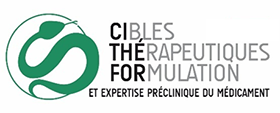Un article intitulé "Nitric Oxide Delivering Surfaces: An Overview of Functionalization Strategies and Efficiency Progress" vient de paraître dans " Advanced healthcare materials "
Auteurs : Jordan Beurton, Ariane Boudier, Amedea Barozzi Seabra, Nihal Engin Vrana, Igor Clarot, Philippe Lavalle
Advanced healthcare materials, 11, 13, 2022, 2102692. https://doi.org/10.1002/adhm.202102692
Abstract
An overview on the design of nitric oxide (NO) delivering surfaces for biomedical purposes is provided, with a focus on the advances of the past 5 years. A localized supply of NO is of a particular interest due to the pleiotropic biological effects of this diatomic compound. Depending on the generated NO flux, the surface can mimic a physiological release profile to provide an activity on the vascular endothelium or an antibacterial activity. Three requirements are considered to describe the various strategies leading to a surface delivering NO. Firstly, the coating must be selected in accordance with the properties of the substrate (nature, shape, dimensions…). Secondly, the releasing and/or generating kinetics of NO should match the targeted biological application. Currently, the most promising structures are developed to provide an adaptable NO supply driven by pathophysiological needs. Finally, the biocompatibility and the stability of the surface must also be considered regarding the expected residence time of the device. A critical point of view is proposed to help readers in the design of the NO delivering surface according to its expected requirement and therapeutic purpose.

